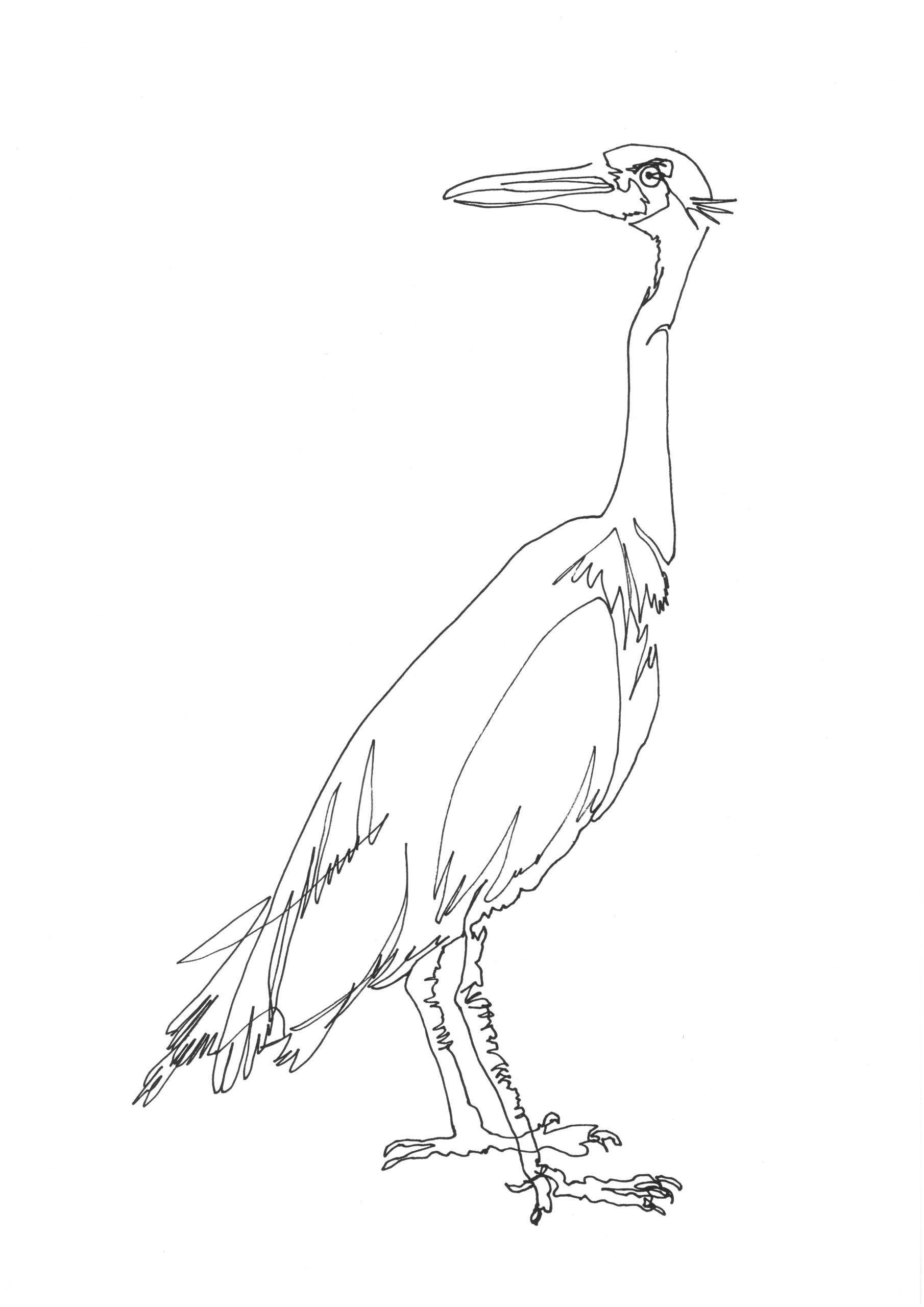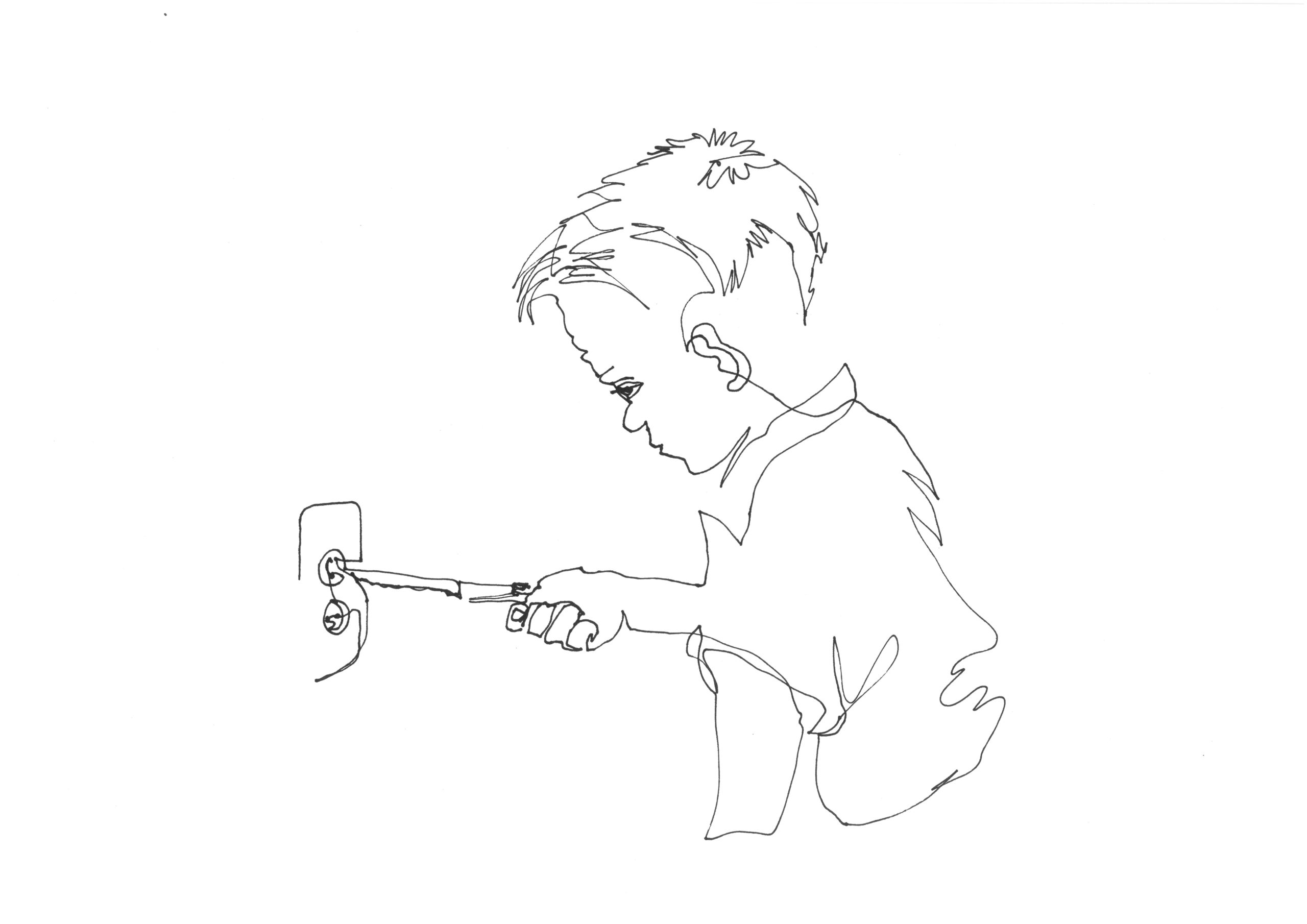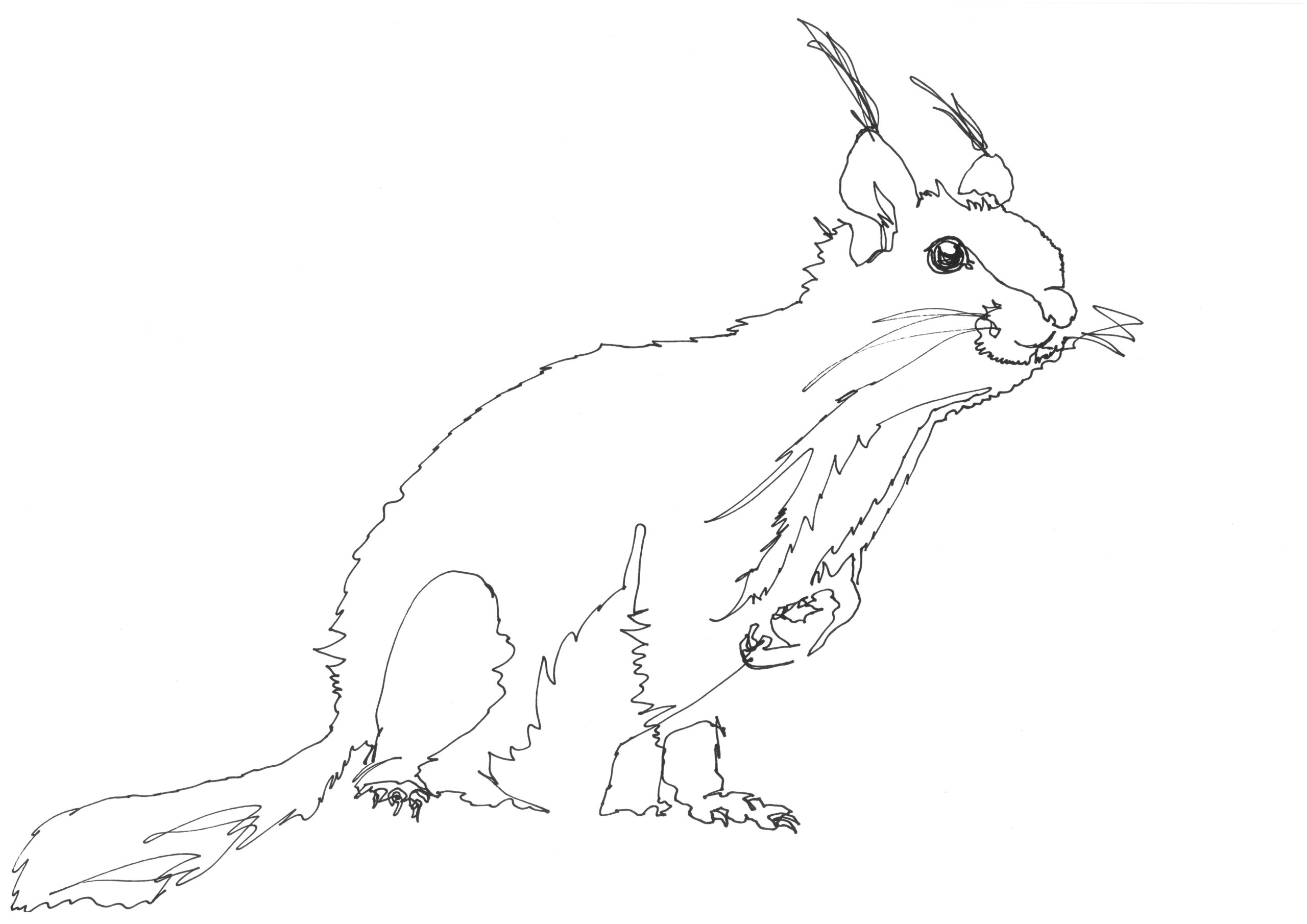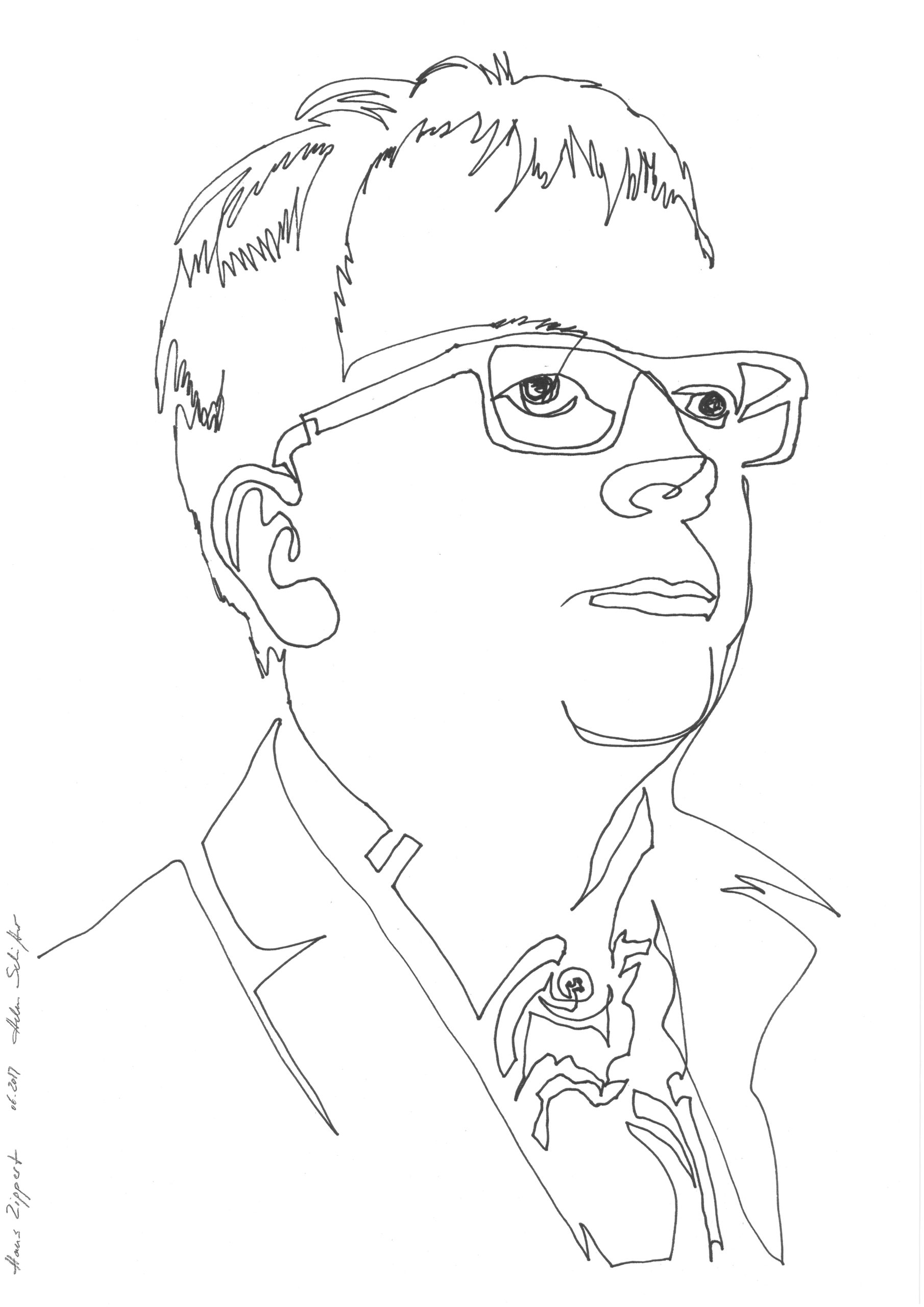Hans Zippert
Curiosity a definition
The Brother Grimm’s German dictionary defines curiosity, as “1. The desire to make something new, to make a change” and “2. The desire to discover something new, to experience something novel, mostly just for novelty’s sake.” So as soon as something is no longer new, it ceases to be of any interest. This effect is employed very successfully by firms that produce electrical equipment, whereby those working in Asian factories and African mines do not really share the consumer’s spine-tingling desire to experience something new. The head of Frankfurt’s Chamber of Industry and Commerce puts it in a nutshell: “One person’s curiosity is another person’s monotonous daily slog.”
It is curiosity that constantly drives architects to construct new buildings, even though most of them, or so the cliché goes, prefer living in spacious old ones. Living in an old building may in fact be a prerequisite for creating a new one – housing sociologists might want to look into this. Brockhaus Encyclopaedia defines curiosity as “The need for the new, where an oriented, as well as a focused and single-minded approach plays a role. Curiosity is a behaviour observed in humans and animals, and is probably inborn.” It is thanks to the curiosity they have acquired, that blackbirds know it is worth hanging around someone digging a hole, because the chances are that they will turn up a worm, which the bird would never otherwise have been able to reach, deep down in the soil. Time and time again, I observe blackbirds strutting up and down on my flowerbed, trying to attract my attention. They are calling out: “Go on! Dig here!” And of course they are curious to see whether I will fall into their trap. But I don’t allow birds to boss me around.

And it was at that point that the dodo realised that being curious was not a sensible thing to be, and he would have been well advised to take a more cautious approach.
Wikipedia, the online encyclopaedia, states: “In many animals, behavioural curiosity is extinguished at sexual maturity. In humans, on the other hand, curiosity lasts a lifetime.” The Greenland Shark only reaches sexual maturity when it is 150 years old and in the meantime, it swims around the world’s oceans, curious as to whether humans will be able to drive it to extinction before then. The dodo’s curiosity, even after reaching sexual maturity, brought about its own downfall in the 17th century. You can visit a replica of this strange bird in the Senckenberg Museum, one of the few buildings in Frankfurt, incidentally, not built by schneider+schumacher. The dodo lived on Mauritius, an uninhabited island, until roughly 1500. It had no natural enemies, so it let its wings wither away. When Portuguese sailors finally landed on Mauritius, the dodo did not understand that they were enemies. It lacked a sense of escape distance too, and it was curious, so it naively approached the visitors. In those days there was no RSPB, nor WWF. The dodo was done for, because the Portuguese were hungry, and after them came the Dutch, who were even hungrier. The dodo was plump in appearance and some sources give very unflattering descriptions of his corpulence. Anyway, he was too heavy to be able to take off and, on account of his bulk, unable to run very fast either. The Dutch had high hopes of delicious barbecued dodo, but the dodo turned out not to be edible. They dubbed it the “wallowbird” and, as a punishment because it tasted so bad, they hunted it down all the more viciously (see also: Thomas Pynchon’s Gravity’s Rainbow). And it was at that point that the dodo realised that being curious was not a sensible thing to be, and he would have been well advised to take a more cautious approach. By then though, there was not enough time for him to grow wings, so the last living dodo was sighted in 1690. By an Englishman.

Given some contemporary buildings, the amateur might indeed ask himself how on earth he is going to lure his partner to go and live there.
A taxidermist at the Senckenberg Museum has masterfully reconstructed him and has judiciously placed him in a showcase, just in case any Dutch are passing by. And this makes the dodo akin to an ornithological equivalent of Frankfurt’s New Old Town. That too disappeared long ago, but we can still go and have a look at it. The dodo looks so shockingly lifelike, and encountering his glass-eyed gaze is quite a challenge. The bird cocks its head slightly to the right and looks at us sadly, or perhaps just melancholically. The taxidermist has applied all her consummate skill to achieve this look, this gesture. But, alas, the New Old Town does not look at us like this – on the contrary, it has something rather cheeky and brazen about it.
The dodo, by the way, was no great builder. He simply pushed a couple of twigs and leaves together to form a nest-like construction on the ground, and that was it. And it was perfectly adequate for its purpose because, for hundreds of years, no one came by who might have evaluated and criticised his creation. No one to ask: “Who’s going to live there? What did the architects think they were up to?” Luckily, not all birds are quite such failures. The male of the native Australian bowerbird, for example, constructs an elaborately designed love nest, by creating an avenue of twigs and depositing stones, shells and bones around the entrance. It collects a hotchpotch of objects, which it cleverly drapes in front of its nest, making sure everything is of a similar colour, but if not, the bird helps out with some berry juice. If a female shows up, he begins his impressive courtship dance. The female selects her partner only on the basis of the quality of the nest and the dance. Once the pair has mated, the female leaves the nest and builds her own – a much simpler affair. The male has nothing to do with their offspring, he needs all his energy for house-building. Very skilful males can attract up to thirty females, while others attract none. Ultimately what is paramount is the quality of the nest, which is why architecture students spend an entire semester just studying the work of bowerbirds. But does it help? Given some contemporary buildings, the amateur might indeed ask himself how on earth he is going to lure his partner to go and live there. But it has to be said: you don’t often witness the courting dance of an architect. Perhaps they are brilliant at it, just like John Travolta in Pulp Fiction.
This was because He considered himself to be the best architect of all, and could not stomach any competition.
What is it that drives humans to want to oppose nature and provoke it with unnatural constructions? Why do humans build? Nature provided stone-age people with no end of cave-like dwellings, which they could then decorate with paintings themselves. By the way, this also goes to show that interior design pre-dates architecture. The first house-like dwellings were originally erected on suitable sites, without any plans. At some point, and no one knows quite when, someone came up with the idea that before you can build a building, you first need a plan. It happened near Babylon, and a quirky tower was built on the basis of such a plan. It apparently threatened to be so successful that God ordered building work to be suspended. This was because He considered himself to be the best architect of all, and could not stomach any competition. God then saw to it that people suddenly started talking different languages, so they were no longer able to understand each other. And today still, this is what makes tower-building such a difficult business. It is not made any easier either by the fact that architects are involved.

If a sculptor wants to create a lion, he just has to chip away everything that does not resemble a lion. Rodin taught us that. But the same thing does not apply to building construction. Architects cannot simply chip away everything that does not look like a high-rise building, or a semi-detached house with a granny flat. Those complicated elements like wintergardens, alcoves, gables, porches, or penthouse flats with river views all need to be planned in detail. Besides, contemporary buildings consist of a mix of materials. Mostly glass, concrete and steel. Sometimes concrete, steel and glass too, but rarely mud, glass and straw. And this is where curiosity again comes into play, it has been a motivating force for architects ever since the Tower of Babel, and it still motivates them today. Curiosity as to whether the building they have drawn on paper will work in practice, whether everything will be as designed. Have they really managed not to overlook any of the 326,997 current building regulations? Will the client pay up? Will the builders stick to the drawings, or will there be some radical, unanticipated re-interpretation of the plans? Alas, one has come to realise that some of the most significant buildings in the world result from the obtuseness – or Babylonian linguistic confusion – of the workers who built them. Hardly anyone knows that the Eiffel Tower was originally planned to be completed covered in timber.
It probably sounds equally far-fetched, but Germany’s capital airport was planned by an architectural office as well. It is not entirely clear whether mistakes were made during the project’s execution, or if, from the outset, the architects’ office had planned the airport as a parking lot for unsalable Volkswagen cars, in order to highlight the ephemeral nature of existence and the futility of flying. But it does make one curious to know what the original intention was. Architects put themselves at huge risk, compared to writers. A failed book may indeed have cost the lives of a couple of trees, but this will quickly be forgotten. By the way, this is equally true of a successful book. A bad film, a boring radio drama, a crazy essay on the subject of curiosity are all soon forgotten, but architects’ mistakes stand there in the public realm for ever, or at least for donkey’s years, and naturally are also present in the public’s consciousness. They accuse and they admonish, even if they were not intended as a memorial. Architects can of course organise their route to work in such a way that they always avoid passing their own buildings, but when it comes to high-rises, things gets tricky. In that case they need to have special glasses made – ones that make high buildings invisible.
Of course it is not fair to blame architects all the time. There were lots of architects involved in the ‘Stuttgart 21’ project, and they too were initially driven on by curiosity, and by the train company’s claim that by digging long enough you would eventually come across a station underground. But to date no one has discovered one, and you cannot really blame the architects’ lack of curiosity for that. Instead of involving ourselves in such trivialities, we should really be asking if the world would indeed be better off without architects. Can one even begin to envisage a world without architects? Then again, why do the Moon and Mars appear so barren? Due to a lack of architects. The Earth is the only planet in the solar system that has been co-designed by architects. Admittedly, the Dolomites, the Grand Canyon and of course the Niagara Falls also turned out quite well, but they do not conform to current noise prevention regulations. Had the dodo allowed architects to plan his nest he might still be alive today, and perhaps even nesting in Frankfurt’s New Old Town. And if you are curious to know whether my text will ever come to a conclusion, then I can set your mind at rest because having rabbited on and on, at least the architects know when to draw the line.
Right here…

Instead of involving ourselves in such trivialities, we should really be asking if the world would indeed be better off without architects.


